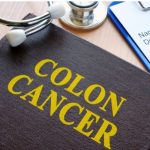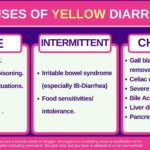10 Causes of Light Brown Stools: What's Normal & Not?
Our content is not intended nor recommended as a substitute for medical advice by your doctor. Use for informational purposes only.
Summary: What you need to know.
Light brown stools |
Notes |
| Mechanisms | – Speeding up intestinal contents (i.e., diarrhea). – Yellow foods. – Yellow pigments such as bilirubin. – More fat in the stool. – Certain infections, such as giardiasis. |
| Common causes | 1. Normal variant (with yellow and fat-containing foods). 2. Diarrhea. 3. Irritable bowel syndrome and other gut diseases such as IBD and celiac disease 4. Infections of the gut (gastroenteritis). 5. Food intolerance or allergy. 6. Bile-related diseases such as biliary obstruction and bile acid diarrhea. 7. Liver diseases such as acute hepatitis A and liver cirrhosis. 8. chronic pancreatitis. 9. Medications such as laxatives and metformin. 10. Others include stress, anxiety, endocrinal diseases, neuroendocrine disease, etc. |
| When to see a doctor | Chronic or recurrent over a long period, you don’t have a sufficient explanation or diagnosis. Bloody stools / blackish stools. Pus-filled stools. Severe intolerable abdominal pain/ persistent vomiting. Fever: high-grade or recurrent fever of unknown origin. Chronic diarrhea with weight loss. Signs of dehydration: difficulty breathing, confusion, loss of consciousness, inability to urinate. Acute diarrhea not responding to usual treatments for more than three days. |
1. Light brown stool is a normal variant (due to food).
As a rule, all shades of brown stool, such as light brown and dark brown stools, are considered normal. However, your stool color varies according to what you eat and several other factors.
Having light brown stool is often not a cause of concern 99% of the time. So don’t worry unless you have other abnormal symptoms.
The most important conditions that cause yellowish to light-brown food include:
A. Large fatty meals.
Too much fat in your meal can turn your stool into light brown. The more fat you eat, the more the fat content of your stool.
People often get loose stool (or even diarrhea) with light brown to yellow color after overeating fat.
Some people cannot digest fat like people with chronic pancreatitis. So light brown stool after fatty meals is not a cause of concern.
B. Yellow foods.
Ingesting yellow-colored foods will lead to light brown or yellow stools. Common foods that cause such a condition include:
- Carrots.
- Sweet potatoes.
- Tumeric.
- High-fat foods.
2 . Diarrhea (loose stool).
The normal brown color of the stool results from the action of gut bacteria on bilirubin (secreted in bile to the gut tract).
With diarrhea, There is a speeding up of the passage of small intestinal and colonic contents. So, the stool will not have enough time to be processed into its brown color.
As a result, diarrhea for any cause leads to lighter colors, such as light brown and yellow stools.
The (speeding up of intestinal contents) is the mechanism underlying the lighter color of your stool in most diseases such as infections, IBS, food intolerance, etc. (see later).
3. IBS (irritable bowel syndrome).
IBS is a common bowel disease that affects a large subset of people. It primarily affects the large intestine and is characterized by recurrent abdominal pain and bowel changes.
IBS symptoms:
- Recurrent abdominal pain (at least a day per week for several months.
- Stool changes (either loose or hard stool).
- Bowel habit changes (diarrhea, constipation, or a mix).
- Mucus in the Stool.
- Bloating.
IBS is often triggered by certain foods such as dairy products and green leafy vegetables. Also, it is related to anxiety and stress.
People with IBS may experience light brown stools due to diarrhea and mucus in the stool.
4. Gut infections.
Gastrointestinal tract (gastroenteritis) infections often lead to diarrhea with subsequent light brown or yellow stools.
Many organisms can cause gut infections, such as:
- Viruses such as norovirus, rotavirus, and astrovirus.
- Bacteria such as salmonella, campylobacter, and E. coli.
- Protozoal infections such as Giardia Lamblia and Entamoeba Histolytica
The lighter brown color of stool is often due to the rapid passage of the stool with diarrhea. However, diarrhea caused by giardiasis is common to have a yellow or light brown color. Giardia infection causes fat malabsorption, leading to offensive, greasy, golden brown or yellow stool that floats.
Symptoms suggestive of gut infections:
- Acute onset of severe abdominal colics (cramps).
- Acute onset diarrhea.
- The stool color is often lighter than usual and watery.
- Nausea with or without vomiting.
- Headaches, dizziness.
- Fatigue and muscle aches.
- Sometimes, fever (low-grade with viral gastroenteritis and high-grade with bacterial gastroenteritis).
Finally, the gut infection may destroy the intestine lining and result in temporary malabsorption, which may continue for weeks or months.
For example, A secondary form of lactose malabsorption occurs after severe gut infections. Lactose malabsorption often results in diarrhea and light brown stools after taking dairy products.
Eventually, the stomach heals, and the digestive disturbances disappear.
5. Food intolerance or allergy.
Food intolerance is the inability of your digestive system to digest or absorb certain foods. It is a prevalent condition affecting up to 20% of the population. In addition, certain types of food intolerance are prevalent in the community, such as lactose intolerance (which affects about 65% of adults).
Food allergy is another food reaction mediated by your immune system. There is an immune reaction to certain foods or food constituents.
Food intolerance and allergy lead to diarrhea and subsequent light brown stools every time you ingest the offending food.
The main features and differences between food intolerance and food allergy are in the table below:
| Food intolerance | Food allergy |
| Affects 15-20% of the population | Affects nearly 2-5% of adults |
| Difficulty digesting certain types of food (not immune-mediated allergy). | An immune-mediated reaction to certain foods or food components. |
| Causes “recurrent acute” or “chronic” attacks of diarrhea (which can be light brown). | Usually causes acute attacks related to the ingestion of offending food. |
| Intestinal symptoms: diarrhea, extensive gas, bloating, and abdominal pain | Intestinal symptoms are the same. |
| No extraintestinal symptoms | Extraintestinal symptoms like rashes, urticaria, swollen lips or face, or severe life-threatening allergic reactions. |
| The severity of your symptoms is proportional to the amount you eat from the offending food. | Even trace amounts of the offending food can produce severe symptoms. |
|
Common offending foods:
|
Common offending foods: (examples)
|
6. Bile-related conditions.
The brown color of your stool originates from bilirubin which reaches your intestine through the bile. The bile is formed inside the liver, stored in the gallbladder, and released into the duodenum through the bile ducts.
Common bile conditions lead to pale brown stools:
- Bile obstruction: The obstruction of the bile (often by a stone in the bile duct or a tumor) leads to pale stools (very light brown or grayish).
- Bile acid diarrhea: Most bile secreted into your intestine is re-absorbed through the last part of your intestine.
The bile acid malabsorption by the small intestine leads to diarrhea with urgency, light brown stools, and abdominal pain with bile acid diarrhea.
7. Liver diseases.
As we mentioned before, the liver is the site of bile formation (The bilirubin in the bile is responsible for the brown color of the stool).
Any acute or chronic liver condition can alter liver bile productionin, leading to light brown stool.
Common examples of liver diseases are:
- Acute hepatitis A.
- Liver cirrhosis.
- Steatohepatitis (Fatty liver inflammation).
- Alcoholic hepatitis.
- Liver cancer.
Liver disease often presents complex symptoms such as jaundice (yellowish eye whites and skin). Abdominal swelling, lower limb swelling, and weight loss are in the late stages.
8. Chronic pancreatitis.
The pancreas is a vital organ for the digestion and absorption of foods. Chronic inflammation of the pancreas leads to EPI (Exocrine Pancreatic Insufficiency).
The digestive enzymes (such as lipase and amylase) are deficient with EPI. The deficiency of enzymes will result in chronic malabsorption and fatty diarrhea (light brown or loose yellow stools).
9. Medications.
Many medications cause light brown stools (mainly through the induction of diarrhea). Review your list of drugs for these drugs:
- Laxatives (especially with laxative overdoses).
- Metformin (a medicine used for diabetes mellitus and to induce weight loss).
- Antibiotic use.
- Proton pump inhibitors such as omeprazole and H2 blockers such as famotidine.
- Anticancer medications (chemotherapy).
- Immunosuppressive drugs.
10. Others.
- Stress and anxiety.
- Endocrinal diseases causing diarrhea, such as hyperthyroidism.
- Neuroendocrinal tumors such as carcinoid syndrome.
- IBD (such as Crohn’s disease and ulcerative colitis).
- Celiac disease (gluten sensitivity).
- Whipple’s disease.
- Small Intestinal Bacterial Overgrowth (SIBO).
When to see a doctor.
The light brown stool is not a cause of concern unless associated with other symptoms. For example, the most common cause of food is often high-fat and yellowish foods.
See a doctor for a light brown stool when:
- Chronic or recurrent over a long period, you don’t have a sufficient explanation or diagnosis.
- Bloody stools / blackish stools.
- Pus-filled stools.
- Severe intolerable abdominal pain/ persistent vomiting.
- Fever: high-grade or recurrent fever of unknown origin.
- Chronic diarrhea with weight loss.
- Signs of dehydration: difficulty breathing, confusion, loss of consciousness, inability to urinate.
- Acute diarrhea not responding to usual treatments for more than three days.
MORE:
- Evidence-based
- Written by a doctor.






